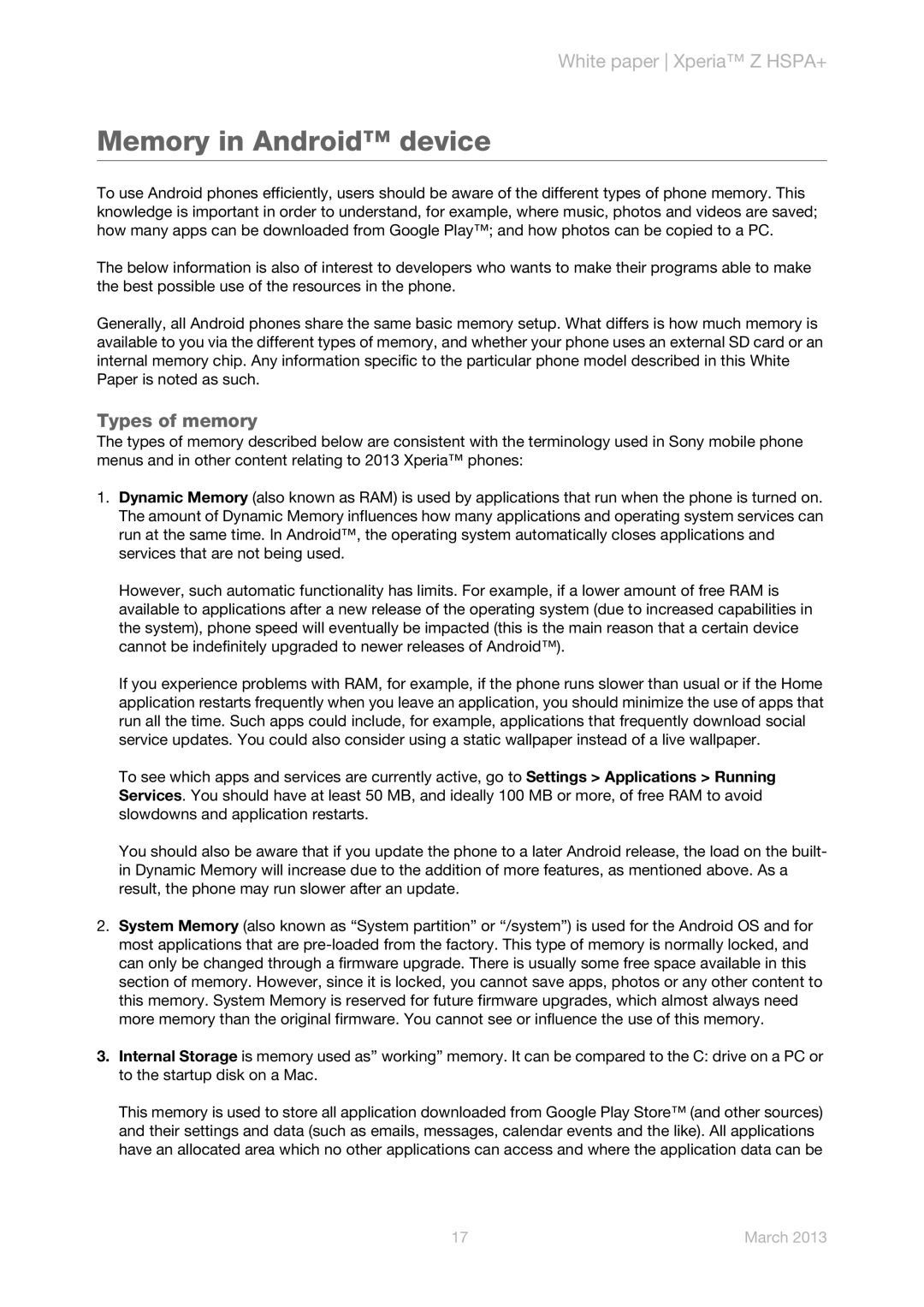White paper Xperia™ Z HSPA+
Memory in Android™ device
To use Android phones efficiently, users should be aware of the different types of phone memory. This knowledge is important in order to understand, for example, where music, photos and videos are saved; how many apps can be downloaded from Google Play™; and how photos can be copied to a PC.
The below information is also of interest to developers who wants to make their programs able to make the best possible use of the resources in the phone.
Generally, all Android phones share the same basic memory setup. What differs is how much memory is available to you via the different types of memory, and whether your phone uses an external SD card or an internal memory chip. Any information specific to the particular phone model described in this White Paper is noted as such.
Types of memory
The types of memory described below are consistent with the terminology used in Sony mobile phone menus and in other content relating to 2013 Xperia™ phones:
1.Dynamic Memory (also known as RAM) is used by applications that run when the phone is turned on. The amount of Dynamic Memory influences how many applications and operating system services can run at the same time. In Android™, the operating system automatically closes applications and services that are not being used.
However, such automatic functionality has limits. For example, if a lower amount of free RAM is available to applications after a new release of the operating system (due to increased capabilities in the system), phone speed will eventually be impacted (this is the main reason that a certain device cannot be indefinitely upgraded to newer releases of Android™).
If you experience problems with RAM, for example, if the phone runs slower than usual or if the Home application restarts frequently when you leave an application, you should minimize the use of apps that run all the time. Such apps could include, for example, applications that frequently download social service updates. You could also consider using a static wallpaper instead of a live wallpaper.
To see which apps and services are currently active, go to Settings > Applications > Running Services. You should have at least 50 MB, and ideally 100 MB or more, of free RAM to avoid slowdowns and application restarts.
You should also be aware that if you update the phone to a later Android release, the load on the built- in Dynamic Memory will increase due to the addition of more features, as mentioned above. As a result, the phone may run slower after an update.
2.System Memory (also known as “System partition” or “/system”) is used for the Android OS and for most applications that are
3.Internal Storage is memory used as” working” memory. It can be compared to the C: drive on a PC or to the startup disk on a Mac.
This memory is used to store all application downloaded from Google Play Store™ (and other sources) and their settings and data (such as emails, messages, calendar events and the like). All applications have an allocated area which no other applications can access and where the application data can be
17 | March 2013 |
